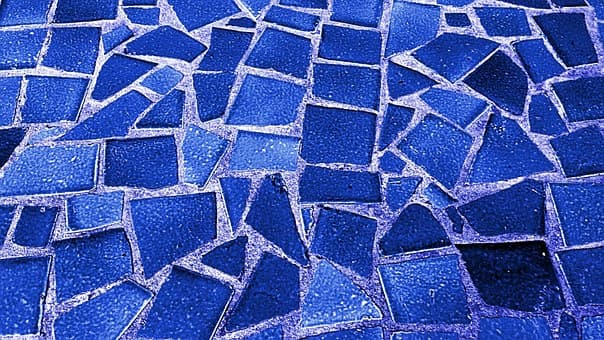Energy Revolution: Extruded Polystyrene Insulation
By Editorial Team
Updated on January 10, 2024

Extruded polystyrene boards are probably your best bet in terms of home insulation material. Such insulation boasts exceptional characteristics at an affordable price point.
Characteristics of Extruded Polystyrene (Rigid Styrofoam)

Lightweight, Rigid, and Insulating Properties
To better delve into the details tailored to the characteristics of rigid Styrofoam, let’s start with the following:
Insulating Properties
Material | Thickness | Lambda | R-Value | Thermal Diffusivity | Thermal Effusivity | Thermal Lag |
XPS | 8 in | 0.031 | 6.5 | 0.63 | 38.97 | 8 |
The table above highlights the fact that extruded polystyrene (XPS) is 8 inches thick, with a thermal resistance (R-value) of 6.5. As for thermal effusivity, a decent insulation value starts below 200, whereas thermal lag starts at 8 hours. Given those figures, XPS is rather worthwhile.
However, in terms of thermal diffusivity, extruded polystyrene isn’t as efficient given that the borderline value for materials to be considered effective is 0.6. Nonetheless, compared to other insulation materials commonly found, extruded polystyrene is the best insulator on the market, followed by next-generation polyurethane.
XPS is all the more worthwhile than next-generation polyurethane since it’s commonly found in all hardware stores.
Rigidity
In terms of rigidity, it’s measured based on its Lamé parameters. The latter determines the shear strength of a material, which is measured in kPa. The test method is better known as an in-plane shear (IPS) test, standardized as such: ASTM C273/C273M-11.
Here are the entire sets of values regarding extruded polystyrene rigidity:
Compression force: 250 kPa
Tensile strength: 450 kPa
Shear force: 250 kPa
Its Lightweight Factor
Still missing from its list of characteristics, is its lightweight factor. Extruded polystyrene has one of the lowest densities of any insulation material retailed in hardware stores—33 kg/m³.
Its density is remarkably low, so much so that in Japan, extruded polystyrene boards are favoured during construction, as such material mitigates seismic shocks passing through structures.
Type 4 Extruded Polystyrene Foam and its Specificities
Take the following table into consideration to really appreciate the technical specificities of Type 4 foam.
Material | Thermal Resistance | Compression Force | Permeance |
Type 1 | R-3.7 | 16 lb./po² | 15 ng/Pa.s.m² |
Type 2 | R-4 | 18 lb./po² | 15 to 60 ng/Pa.s.m² |
Type 3 | R-5 | 20 lb./po² | >60 ng/Pa.s.m² |
Type 4 | R-5 | 30 lb./po² | 87 ng/Pa.s.m² |
Type 4 foam is more efficient compared to other types of insulation boards. It’s mainly used in areas requiring superior density and heavy load resistance:
Slab foundations
Parking lots
Protected membrane roofing systems
Flat roofs
Type 4 foam is marketed by some of the largest manufacturers, such as Soprema, which retails Sopra-XPS 40, standard CAN/ULC S701.1 compliant foams.
What is the difference between expanded and extruded polystyrene?
Similarities are few and far between. Here’s a chart detailing the insulation efficiency differences between extruded polystyrene (XPS) and expanded polystyrene (EPS):
Materials | Thickness | Lambda | R-Value | Diffusivity | Effusivity | Thermal Lag |
XPS | 8 in | 0.031 | R-6.5 | 0.63 | 38.97 | 8 |
EPS | 8 in | 0.035 | R-5.7 | 1.20 | 31.86 | 6 |
To crown the best insulator, extruded polystyrene solely takes a backseat to expanded polystyrene on account of its effusivity. In all other areas, it surpasses the latter.
What about in the long run? Note that both materials are as efficient as mentioned in the table when new, but over time, any given material will lose some of its efficiency.
Note that XPS wins it in terms of long-term durability too. As such, researchers from the University of Alaska Fairbanks studied the R-value of EPS and XPS during a wear period of 1 and 31 years. Here's a rundown of the results:
EPS must be 1.5 to 2 times thicker than XPS to achieve the same R-value.
Standards ASTM C272, D2842, and C578 don’t account for the decreasing R-value long-term in real-time use.
New-generation EPS isn’t more efficient than its former version.
Moisture absorption further negatively affects EPS compared to XPS.
In other words, they’re both excellent insulation materials, but extruded polystyrene is far better than expanded polystyrene.
Extruded Polystyrene and Floor Insulation

How to Secure Extruded Polystyrene Boards
The key to efficient thermal insulation is a sturdy fit and optimal adherence. Let’s take a moment to explore the fundamental steps of a proper installation.
Step 1: Level your floor
Make sure the floor on which the extruded polystyrene boards are installed is perfectly flat. If not, level the floor using a self-levelling cement.
A flat floor doesn't have any bumps or recesses exceeding 0.19 inches (5 mm) along a 6.6 foot (2 m) long surface, or 0.07 in (2 mm) along a 7.87 in (20 cm) distance.
Step 2: Install XPS boards
To insulate a floor, simply lay the boards down and trim them accordingly to ensure the entire floor space is properly covered. We’ll delve into how to properly cut your polystyrene boards down below. Don’t be too surprised if the boards are identically shaped. Depending on how they were stored by retailers and then in your home prior to being used, the edges can be more or less straight. To ensure proper weatherproofing, you can fill in any gaps between two boards with spray foam.
Step 3: Trim excess foam and clean floor
If you’ve filled in the gaps with foam, use a hand saw to trim any excess foam for a smooth surface.
Once the boards are installed, vacuum the surface to ensure it’s clean prior to installing your new flooring atop the insulation.
What glue should you use with extruded polystyrene?
Polyvinyl acetate (PVAc) is the best type of glue paired with polystyrene. It’s a water-based glue with a neutral pH that’s easy to apply (paintbrush or roller) and clean, but also compatible with:
OSB panels
Wood
Drywall panels
Fabric
Cardboard
MDF
How to Cut Extruded Polystyrene Boards Down to the Right Thickness
Polystyrene boards are often cut using a hand saw meant for either wood or plastic. Such a tool will give you a straight and accurate cut, but depending on your skill level, the incision might:
coil;
generate a decent amount of dust;
create static electricity; and
produce a lot of debris.
Therefore, saws aren’t the best tool, especially since they tend to create spongey or granular-like edges.
Instead, use a $6, 9 mm utility knife for a straight, dustless, and accident-free cut. Avoid using a bigger utility knife, the result won’t be as clean.
For the perfect cut, make the first incision where you intend on cutting, then make another, deeper cut with the blade, separating the material into two parts.
Extruded Polystyrene Coating and Paint: What to Know
You can paint extruded polystyrene boards, just not with whichever type of paint. Solvent-based paints attack and dissolve polystyrene foam.
To paint a polystyrene board, turn to water-based coatings, meaning:
Vinyl paints
Acrylic paints
If you have to apply a solvent-based paint, use a water-based paint as a primer base to protect the material.
Rigid and Extruded Insulation Board: Products & Costs

There are numerous brands of insulation boards. However, in retail stores, you’ll mainly find Sopra-XPS by Soprema. The price point will obviously depend on material characteristics:
Boards | Type | Thermal Resistance | Compression Force | Permeance | Price (2” x 2’ x 8’) |
Sopra-XPS 40 | 4 | R-5 | 40 lb./in² | 52 ng/Pa.s.m² | $49 |
Sopra-XPS 30 | 4 | R-5 | 30 lb./in² | 52 ng/Pa.s.m² | $44 |
Sopra-XPS 20 | 3 | R-5 | 20 lb./in² | 57 ng/Pa.s.m² | $38 |
Extruded Polystyrene Insulation: Wrap Your Home in Tomorrow’s Energy
Extruded polystyrene insulation is a major contributor to modern construction's energy revolution. Its thermal efficiency, durability, lightweight and low maintenance factors are all advantageous characteristics that make this material the go-to choice. Whether used for residential, commercial, or industrial construction, extruded polystyrene has reliable efficiency and contributes to reduced energy use and fewer greenhouse gas emissions.
Get 3 quotes for your insulation project
RenoQuotes.com can help you get quotes for your insulation project. By submitting your project, we’ll put you in contact with top-rated contractors. Fill in the form on the homepage (it only takes a few minutes) and get estimates from trusted professionals.
Dial 1-844 828-1588 to speak with one of our customer service representatives.
Looking for something else?
Related articles
The latest industry news, interviews, technologies, and resources.

Editorial Team
•28 Aug 2024
Your home has a variety of moving parts and technological functions. Whether it’s heating or cooling, washing or drying, these functions use plenty of electricity to keep things running. The average North American home consumes 901 kilowatt-hours (kwh) of energy a month.

Editorial Team
•06 May 2024
Is the floor between your living room and basement cold? It may stem from a poorly insulated rim joist, also known as a band board. Said piece of structural lumber is paramount to a floor system yet rarely insulated in homes built prior to 1945 in Quebec, or insufficiently so in residences built during the 1970s and 80s.

Editorial Team
•07 Nov 2023
Often on the blog, we discuss decor and design trends but we usually focus on the home front. This allows our readers to find inspiration to create the perfect layout for their interiors and exteriors. But what about those looking for ideas for their business?

Editorial Team
•07 Nov 2023
Whether choosing to renovate the kitchen or bathroom, ceramics are an excellent choice as they allow you to conceive designs as diverse as they are original. Available in a large variety of styles, ceramics make it easy to create custom pieces as they offer an infinite range of possibilities.

Amanda Harvey
•06 Jun 2025
Pressure washers are a quick and excellent way to get rid of debris that has built up over winter, as well as other dirt and grime that happens to be stuck on your outdoor surfaces. Driveways, cars, the side of your home and concrete floors can all benefit from a pressure wash, and the end results will surely leave friends and neighbours wondering how you managed to get things so clean.